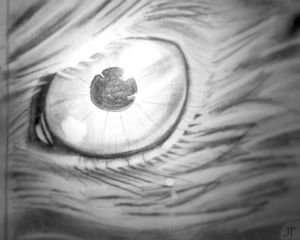Using Hawkeye from the Avengers to communicate on the eye

Pop culture figures like Iron Man, Captain America and Hawkeye can provide a unique and engaging platform for the communication of difficult scientific concepts. In the classroom, these characters can be used to communicate learning objectives to students in an interesting, accessible manner by taking advantage of student familiarity with these superhero characters. Barry Fitzgerald of Delft University of Technology (TU Delft, The Netherlands) illustrated eye biology using Hawkeye, a member of the Avengers, in an article published in the journal Advances in Physiology Education.
Hawkeye
Many people are familiar with Hawkeye, as portrayed by Jeremy Renner in films such as The Avengers, Avengers: Age of Ultron, and Captain America: Civil War. He is also due to appear in the forthcoming Avengers sequel, Avengers: Infinity War, which reaches theaters in April.
The character first appeared in the Marvel comic book Tales of Suspense, No. 57, in 1964, and he joined the Avengers in Avengers, vol. 1, no. 16, from 1965. His two key physiological characteristics are his speed of reaction and superhuman eyesight, which contribute to his ability as a master archer. This advanced eyesight has physiological aspects in common with many birds of prey. Fitzgerald reports on his own experience in classrooms, discussing the physiology of the human eye via comparison with other species, such as birds of prey, and reflection on advancements related to genetic engineering and wearable technologies.
Fitzgerald says, "Hawkeye has proven to be a highly suitable popular culture character for use in scientific communication and outreach. He has become an integral part of my scientific outreach program when discussing the limitations and possible augmentation of human vision."
Superheroes in the classroom
In the classroom environment, popular culture can make the learning process more engaging, invigorate the content linked to key learning objectives, and potentially address issues students have with key concepts. There are many ways that a character like Hawkeye can be used in conjunction with learning objectives, and Fitzgerald addresses these in his article:
- Teachers can focus on differences between standard human eyes and Hawkeye's eyes to explain the function of the human eye and highlight limitations. Comparison of human vision with that of birds of prey can also be used to emphasize differences in the sensory systems of different animals.
- The possibility of replicating the eyesight of birds of prey in humans can prompt discussions on DNA, protein synthesis, advanced genetic engineering techniques, such as the CRISPR/Cas9 genetic engineering tool, and transgenetics. These topics can, in turn, motivate dialogue with regard to responsible innovation and proper ethical practice in genetics.
- It is also possible to examine recent advancements in modern technologies, such as wearable bionic lenses that can give the wearer enhanced eyesight, or electronic retinas.
- Hawkeye can be used to inspire student projects. Students could investigate the limitations of Hawkeye's sight and present strategies for how he might defeat villains under specific circumstances. Hawkeye can also form the basis for in-class assignments and final examination questions.
More information: Barry W. Fitzgerald, Using Hawkeye from the Avengers to communicate on the eye, Advances in Physiology Education (2018). DOI: 10.1152/advan.00161.2017
Provided by Delft University of Technology

















